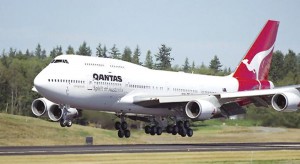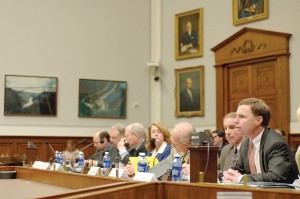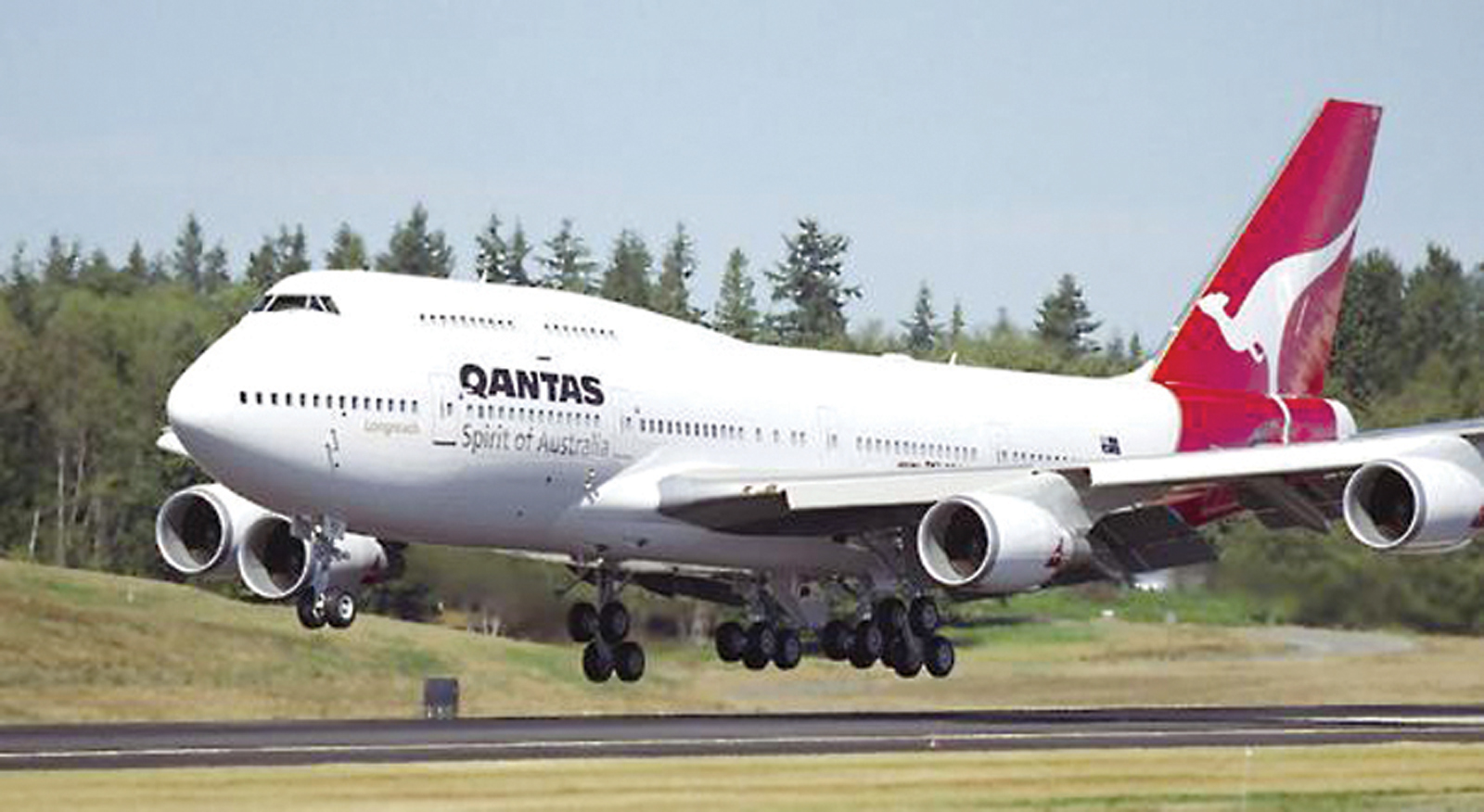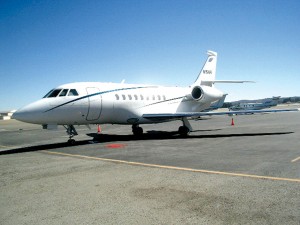By W. Stephen Dennis
Implementing user fees for general aviation aircraft to fund the National Airspace System, as first proposed by the Clinton Administration in 1998, is still a very sensitive subject in aviation circles. The basic idea goes back to EBACE in Geneva, when Ed Bolen, president of the National Business Aviation Association, spoke about the user-fee theory. Because of the pressure on commuter airlines, the Airline Transportation Association is launching a campaign to get GA to pay its “fair share.”

Is GA paying for their fair share of their use of the National Airspace System through the current system of excise taxes?
Commercial airlines are applying political pressure because the industry is desperate for money. Implementing user fees is their attempt to redirect expense to the general aviation side of the industry. It’s important to note that since the 1970s, GA aircraft have paid for their fair share of the system through various excise taxes, such as fuel and passenger taxes. These taxes, which help fund the Airport and Airway Trust Fund, support nearly 87 percent of the Federal Aviation Administration budget. The alleged funding shortage comes from policy changes rather than from lost revenue.
There’s no simpler or more accurate way to distinguish between heavy and light users of the system than to measure the amount of fuel burned. Small aircraft use less fuel and pay lower taxes; large aircraft use more fuel and pay more in tax. Once in place, user fees bring with them the administrative costs required to support a large and expensive bureaucracy of collectors, administrators, auditors and accountants.
General aviation doesn’t drive the costs of the air traffic system in proportion to the commercial airlines. In fact, if GA were grounded tomorrow, the cost of our air traffic system wouldn’t go down appreciably. Ronald Reagan Washington National Airport was closed to general aviation for four years after 9/11, but the FAA’s costs associated with that airport haven’t gone down.
As members of a modern day capitalist society, we don’t have to look far to understand why we don’t pay attention to taxes. We’re desensitized; there’s a tax on just about everything. We need to pay closer attention. If we don’t fight for our own interests, those of us in GA will pay the price. As the aphorism states, “If we don’t blow our own horn, someone will use it as a spittoon.”
Why the need for user fees?
Currently, the FAA is faced with declining trust fund balances, a reduced general fund contribution and increasing operational costs. This shortfall has prompted questions about how FAA services are funded and whether changes to the funding mechanism, which includes user fees for GA, are needed.
During the Clinton Administration, a transportation subcommittee was formed to discuss this issue. Committee members expressed the need for a more predictable and stable means to fund the FAA and long-term capital improvements to the National Airspace System.
As part of their efforts to implement $300 million in new aviation user fees in fiscal year 1998, that administration targeted “general aviation turbine aircraft” for a yet-to-be-determined fee. The budget proposal also recommended that the FAA be completely user-funded beginning in 1999. Aviation system users would be forced to pick up $3 billion in costs, on top of the millions of dollars in proposed new fees.
Trust fund background
For nearly four decades, excise taxes on GA fuel, airline passenger tickets and cargo have financed the bulk of the expenses for airport improvements, including, but not limited to, modernizing the air traffic control system, researching new technologies and contributing to financing the daily operations of the FAA ATC system. The tax profits deposited into the Airport and Airway Trust Fund support nearly 87 percent of the FAA budget.
Post 9/11, the amount of tax money going into the fund has significantly declined. However, according to most outside the government, the decline isn’t enough to cause the fund to be depleted. Several factors caused the drain on the trust fund surplus, including the decline in flying after 9/11 and expenditures associated with security measures in 2001 and 2002. Expenditures were later transferred to the Transportation Security Administration
Although revenues now appear to be on an upward trend once again, the uncommitted cash balance in the fund has been dramatically reduced–-from $7.3 billion at the end of fiscal year 2001 to $2.4 billion at the end of fiscal year 2004.
Legislative background
The alleged funding shortage comes from policy changes rather than from lost revenue. The Airport and Airway Trust Fund (and its associated special taxes) was enacted in 1970. Sold on the basis of providing a fund to develop a system of airports and airways and to invest in ATC facilities, the fund was created solely to finance the aviation infrastructure. It was recognized that air transportation was in the public interest and that funding for the FAA should come from general revenues.
Over the years debates have raged over whether the trust fund should pay for any portion of FAA operations. Those debates have now evolved into how much of the general fund should be used toward FAA operation costs. The GA community is willing to continue contributing to the general fund through excise taxes paid on GA fuels.
Proposed user-fee system
To clarify the issue, it’s important to define exactly what a user fee is. It’s a weight-and-distance-based means of charging those who utilize the air traffic system.
It’s still uncertain whether user fees will provide a better approximation for general aviation’s use of the system than that provided by the current fuel tax. It’s important to keep the following statement foremost in our minds when the topic of user fees for GA is discussed: there’s no more simple or more accurate way to distinguish between heavy and light users of the system than to measure the amount of fuel burned. Why then would the industry want to discontinue using a mechanism that’s so simple and accurate?
In prepared testimony submitted for the record, the Aircraft Owners and Pilots Association told the Senate Aviation Subcommittee that a user-fee system would denigrate safety.
“A piecemeal system of fees and charges gives pilots a direct financial incentive to avoid using the safety features and programs provided within the National Airspace System,” the organization said.
AOPA, through its Air Safety Foundation, has worked with the FAA to bring GA accidents down to an historic low. Safety is of paramount importance when one considers the user-fee argument. Risk will exist when converting to a user-fee-based system. GA accident rates are higher in countries with high user fees.
The proposed system funded entirely by direct users will be undercapitalized and underutilized. If fees from users are expected to cover all FAA costs, users will be discouraged from using air transportation services to the point of putting at risk economic development as well as aviation safety. The result is a tradeoff between safety, efficiency and cost recovery.
Full cost recovery through charges to users may result in lost productivity, slower economic growth, competitiveness and tax revenues to the federal government, as well as higher accident rates. Utilization of GA turbine aircraft would be reduced significantly (on the order of one-third or more, according to recent studies), harming many companies. It would also be detrimental to the national economy, including the economy of thousands of rural cities and towns that now benefit from the ebb and flow of commerce facilitated only by business aviation.
Reduction in business activity would also result in a reduction of business tax revenues, locally and nationally. Existing aviation policy would be affected, possibly in a way that would discourage new users from air transportation. Aviation tax revenues from all sources would be reduced, including lost fuel taxes, lost taxes due to reduced sales of aviation-related products and services and inhibited economic activity.
Collecting user fees would require a huge new accounting bureaucracy. The reality of such a system is that the users would have to pay much more in order to generate the same amount of net revenue for the FAA. As stated previously, once they’re in place, user fees bring with them the administrative costs required to support a large and expensive bureaucracy of collectors, administrators, auditors and accountants.
In the European Union alone, processing invoices can cost $85 to $125 per invoice. Fuel taxes, by contrast, are directly remitted to the federal government, eliminating the need for a large bureaucracy to collect the taxes from hundreds of thousands of individual pilots and aircraft owners. Why then would the GA community want to set aside a system that costs so little to implement in favor of one that requires high administrative costs?
Negative perception by the public
The business aviation community must be especially aware of how the perception of “business jets” is affecting the related dialogue and debate in Congress. Some lawmakers, particularly those in the Senate, maintain the view of business jets as luxury items or, at best, tools utilized by companies with “deep pockets.” Furthermore, these government officials choose to rely on questionable budget projections and cost allocation analysis, which suggest that business jets account for as much as $800 million of the FAA’s annual costs, while contributing only $100 million in excise taxes to the Airport and Airway Trust Fund.
Senate Commerce, Science and Transportation Committee Chairman John McCain (R-AZ) used the occasion of the committee’s consideration of the legislation reauthorizing FAA programs and the Airport Improvement Program to complain that corporate aviation is “paying nothing” for its use of the air transportation system. Senator McCain’s comments illustrate the challenges that remain in fighting user fees and negative perceptions of the business aviation community. Although neither of the FAA/AIP reauthorization bills currently working their way through the House and Senate contains user-fee provisions, supporters such as McCain continue to push for the change.
The role of those activists in the GA world is to stay focused on ensuring that business aviation’s positive message isn’t lost among the misinformation that has surfaced recently.
Unfair discrimination
The NBAA has expressed serious concerns with the discriminatory way in which turbine-powered business airplanes are considered, as well as with ordaining user fees prior to a comprehensive and detailed review of all available means for raising revenue from the aviation community, if it’s determined such revenue is needed.
The organization also praised Senator Bryan (D-NV), who has questioned the “singling out” of business jets for less favorable treatment than would be given to other segments of the aviation community. This support in the Senate has resulted in a commitment from Senator Ford (D-KY), one of the main sponsors of the bill, to address this concern in future hearings.
GA pays to use the system
In 2005, in testimony before a House Aviation Subcommittee hearing held to assess the financial condition of the Airport and Airway Trust Fund, NBAA CEO and President Ed Bolen detailed how GA pays to use the system. He challenged misperceptions about the industry and called for effective solutions to strengthen the national aviation infrastructure.
Bolen has outlined seven different taxes and fees through which the GA community pays for its use of the aviation infrastructure. Among these, he highlighted the fuel tax, which aircraft operators pay at the pump when fueling.
He also pointed out that IRS records of GA fuel receipts and surveys of fractional companies and charter operators indicate that GA operations are estimated to have contributed in excess of $600 million into the trust fund in 2004 alone. This $600 million represents between six and seven percent of the $9.2 billion deposited into the fund in 2004.
Bolen is also quick to point out that GA isn’t what drives the FAA’s costs. Because the National Airspace System performs functions critical to public safety and the national economy, he argues that general fund revenues should form part of the FAA’s budget. Aviation contributes nine percent of the total economic activity in the nation, and deserves to be supported more by the general fund.
On the general aviation side, the GA community strongly supports a contribution from the federal government’s general fund to help pay for the FAA and trust fund revenues. If the trust fund falls short, the general fund should make up the shortfall. All things considered, the user-fee system raises more questions than it answers.
GA statistics
GA operations (including fractional operations and charters) represent more than 30 percent of IFR operations. Included in that number, turboprops account for 7.2 percent, pistons 11.2 and business jets 12.5. However, as economists point out, operational percentages don’t equate to costs imposed on the system.
Economists look at cost drivers, rather than operational numbers, when allocating costs. GA doesn’t drive the costs of the air traffic system in proportion to the commercial airlines. The situation at Ronald Reagan National Airport verifies this claim.
Maintain status-quo
Simply put, NBAA believes the FAA funding system that GA has relied on to finance the agency for more than 35 years is a useful, appropriate and efficient system, which reflects the benefits both the public and direct users receive from its operation. The system has enabled our nation’s air transportation system to thrive as the world’s safest and most efficient. It’s the proper system to ensure that our future needs are met.
The U.S. has the largest, safest, most diverse ATC system in the world. One might question whether scrapping a system makes sense, when it has worked well for 35 years. Replicating foreign models has not proven as effective.
Proposed user-fee related legislation
The proposed user-fee system is cumbersome and ineffective, due to the administrative burdens, inefficiencies and potential for regular increases inherent in the user-fee concept. The position of GA is that reform should come first, followed by additional funding later, if needed.
The legislation appears to have limited, if any, appreciation or understanding of the value of business aviation to the nation’s transportation system and economy. If enacted by Congress, the fees for services would create a significant administrative and cost burden on users of the aviation system.
GA opposes the move

In testimony before a House Aviation Subcommittee hearing held May 4, 2005, NBAA CEO and President Ed Bolen detailed how GA pays to use the National Airspace System, challenged misperceptions about the industry, and called for effective solutions.
NBAA asserts that 100 percent funding from user fees isn’t in the best interest of our nation. A common belief held by most in the GA community is that the proposed fee and move to 100 percent user funding are dangerous ideas that could put many flight departments out of business, prohibit many companies from expanding markets and reduce commerce to thousands of communities nationwide.
Although the legislation has considerable merit in critical areas such as procurement, personnel and management reforms, NBAA is seriously concerned with its user-fee provisions–in particular, the ATC service fees that are directed primarily at business jet operators.
The aviation community would be irresponsible in wasting its energies by focusing on switching to an unproven and risky user-fee system. Instead, the community should recognize the many strengths of the existing, traditional system, and aggressively pursue changes that will enable the FAA and the entire aviation community to be more effective.
According to AOPA, the airline industry’s financial situation doesn’t justify a need to overhaul the federal aviation system in order to assess user fees. Even if the FAA needs more revenue now or in the future, AOPA believes that user fees are not the best way to collect that revenue, for a number of reasons:
1) General aviation also supports the aviation system with locally imposed taxes and charges on hangar and tie-down rental, fuel and other assessments.
2) Through fuel faxes, operators of light GA aircraft contribute $60 million a year and corporate jets pay $210 million annually to the trust fund.
3) Collecting the current aviation excise taxes is extremely efficient and collection cost is low. The system has been in place for nearly four decades, and requires very little government oversight. Collecting user fees would require a huge new accounting bureaucracy with a much higher collection cost.
4) Assessing user fees for air traffic denigrates safety by discouraging aircraft operators from using the services.
5) The air traffic control system is a public system designed to provide services for the airlines far in excess of that necessary for GA.
6) Implementing user fees removes critical congressional oversight, directing and management of FAA resources that are key to an efficient national air transportation system.
Guiding principles
Today, the United States utilizes nearly 50 percent of all of the commercial aviation activity and 75 percent of all of the GA activity in the world. The nation’s air transportation system is also 73 percent more productive and more efficient and it enjoys the best safety record. Decision-makers must proceed in a deliberate and methodical fashion before throwing away a system that has achieved such results.
Any proposed legislation must ensure a strong general fund contribution. Every U.S. citizen benefits from a strong, safe and secure air transportation system, whether or not they travel by airplane. As beneficiaries, the public should continue to pay through general taxpayer revenues, for a significant portion of the national air transportation system. The general fund contribution is also necessary to cover costs imposed by the military and other government users.
The proposed legislation must also control FAA costs. Over the past several years, the FAA has made tremendous progress with its costs. However, continued progress is necessary to ensure that any additional funding, whether it comes from industry or the general fund, isn’t wasted.
The key to success of any proposed legislation is the continuation of a GA fuel tax-based system. NBAA believes the fuel tax is an appropriate reflection of the use of the system. Aircraft that fly greater distances burn more fuel and pay higher taxes. In addition, the jet fuel used by the more sophisticated aircraft is taxed at a higher rate than the aviation gasoline used by less sophisticated aircraft.
The user-fee fight is far from over. As we enter 2006, airlines are renewing their campaign to impose a larger burden on GA pilots. Faced with bankruptcy and a thin bottom line, air transport organizations and airline CEOs are launching an aggressive campaign, asserting that airlines overpay for services and disproportionately fund federal responsibilities. The major airlines have argued that GA users should pay more and have suggested user fees should be implemented. These fees would not resolve the FAA’s budget problems and would lessen the FAA’s motivation to become a more cost-effective and efficient agency. Such fees would also reduce business jet operations, hurting our nation’s transportation system.
W. Stephen Dennis is the founder, CEO and president of Aviation Resource Group International, a leader in aviation advisory services since 1975. He has more than 25 years of varied aviation industry and executive and senior management experience, covering specialized areas such as operational efficiency, profitability conversions, business development, strategic planning, marketing and corporate restructuring.












